- Home
- Winston Groom
The Aviators Page 5
The Aviators Read online
Page 5
JAMES HAROLD DOOLITTLE WAS BORN in Alameda, California, on December 14, 1896.1 His father, Frank Henry Doolittle, a carpenter, was descended from protestant Huguenots who fled religious persecution in France and settled in New England in the late 1700s or early 1800s. In the mid-1890s he married Doolittle’s mother, Rosa Cerenah Shephard, a strong-willed, twenty-six-year-old beauty of “sturdy pioneer stock.” James was their only child and their means were modest.
Frank Doolittle turned out to be one of the dreamers and wanderers who were constantly on the make for adventure and fortune. Less than six months after James Doolittle was born his father joined the frantic stampede known as the Klondike Gold Rush. Bad luck overtook him from the start when he lost all of his carpenter’s tools in a shipwreck on his way to the Yukon. He then made his way to Nome, Alaska, an Eskimo fishing village on a vast and treeless plain, bound by the bleakness of the Bering Sea.
Flakes of gold had been discovered along oceanfront beaches and the banks of the river that washed out of the distant mountains, and—much to the amazement and dismay of the Eskimos—an immense tent city soon materialized around Nome as thousands arrived to sift the sands for gold. Frank Doolittle prospected among them and put his carpentry skills to use as well, and in due time he sent for James and his mother, who arrived by steamer, after a trip of eight days and three thousand miles, in the summer of 1900.
Nome quickly became a typical gold-rush town, with an overabundance of gamblers and prostitutes. There was carpentry work for James’s father to perform; by the time James was five the town boasted a bank, three churches, six whorehouses, and twenty saloons. The next year a schoolhouse was added, which was where James—now known as Jimmy, learned to fight. Being the shortest boy in his class, Jimmy was subjected to teasing and provocations by his older, taller mates, and soon he gained a reputation for defending himself from insults.
In 1908, when he was eleven, Jimmy and his mother boarded a steamer for Los Angeles, while his father remained in Nome. By then relations between father and son had become strained, and they would meet only once more. After finishing elementary school, Jimmy enrolled at the Los Angeles Manual Arts High School, a trade school where among his classmates were, curiously enough, the future Metropolitan Opera star and Hollywood actor Lawrence Tibbett; Goodwin Knight, who became governor of California; and Frank Capra, who went on to direct It’s a Wonderful Life and Mr. Smith Goes to Washington, among many other popular Hollywood movies. For sports, Doolittle took up tumbling and joined the school team.
Around this time one of Doolittle’s English teachers offered to teach him scientific boxing after witnessing him in a school yard brawl, which—contentious, like Eddie Rickenbacker—the fifteen-year-old happily accepted. Before long Jimmy was winning amateur boxing matches along the Pacific coast, first in the flyweight, then bantamweight classes. At five-foot-four he was as tall as he was going to get. That same year, 1912, he won the Pacific Coast amateur championship, held at the Los Angeles Athletic Club, and appeared to be on his way to a career in boxing.
Not all of Doolittle’s pugilism was confined to the ring, however. From time to time he would engage in street brawls, which scandalized his mother, who was trying to steer him toward a respectable life. He was cured of his pugnaciousness once and for all after landing in jail for fighting a truck driver who had insulted a girl. Rosa Doolittle let him sweat it out in a cell for the rest of the weekend. “I’ll be around Monday morning and get him out in time for school,” she told the desk sergeant when he called. After getting a good look at the inside of a hoosegow, Jimmy decided that street fighting was a dead-end form of recreation.
It was also about this time that Doolittle met the love of his life, Josephine Daniels, an attractive A-student classmate with a biting humor and seductive smile whom everyone called “Joe.” One of Jimmy’s friends described Joe as a “Sunday girl,” meaning that you could have your Friday and Saturday night flings, but the girl you took out on Sunday was one of those types to be treated special.
At first Joe Daniels wanted little to do with the motorcycle-riding, C-student brawler, but in time she apparently saw something in him, and he, in turn, started combing his hair, dressing up with a necktie, and minding his language around her. By the end of high school they were talking about marriage, but both wanted to go to college. Jimmy had no money and turned pro in his boxing career in order to earn his tuition. Fighting under the name “Jimmy Pierce” so his mother and the amateur authorities wouldn’t know, he motorcycled up and down the Pacific coast to fight clubs on the weekends, earning about thirty dollars a bout—all either wins or draws.
Because Joe had no desire to marry someone whose only skill was fighting, Doolittle entered Los Angeles Junior College in 1914, where he studied mining engineering. In 1916 he transferred to the Engineering School at the University of California, Berkeley, where he joined the boxing team and never lost a match. He joined the college varsity gymnastics team as well and received high praise for his acrobatics.
His boxing career came to an end the following year when a tough promoter overmatched him against a seasoned pro named “Spider” Reilly, who danced all over the ring with Jimmy chasing and never laying a glove on him. After that Doolittle concluded that he had best stick to engineering.
By the spring of 1917 Doolittle was well on his way to a degree at the University of California when the United States declared war on Germany. That autumn, when he returned to Berkeley for his senior year, Doolittle was caught up in war fever and instead enrolled for pilot training in the U.S. Signal Corps aviation section.
JOE HAD GONE TO WORK for a large insurance company and became expert in a type of filing system that was a forerunner to computerized filing. By the time World War I came along she had moved to work in a shipyard and, employing the revolutionary filing system, had several hundred girls under her. The two were married, over the objections of Joe’s mother, on Christmas Eve, 1917.
Jimmy was still awaiting the army orders that would send him to ground school and didn’t have a cent, so Joe had to pay for the marriage license. They honeymooned in San Diego on her last twenty dollars, eating in cafeterias where servicemen were given free meals.
After graduating ground school in January of 1918, Jimmy went to San Diego for flight training at Rockwell Field. On the first day, as he and his instructor taxied out in a Curtiss JN-4 “Jenny,” they heard the shocking boom of wood and metal followed by an eerie quiet. Two of the trainers had crashed and the wreckage fell only yards from Jimmy’s plane. He and his instructor rushed over to the nearest Jenny, which was being flown solo by a student. He was dead. The other plane contained a student and his instructor, both mangled but alive. Jimmy helped pull them from the wreckage as the ambulance arrived. Jimmy’s instructor gave him a look and motioned for him to get back in the plane.
“I was shaken by what I had seen but nodded in agreement,” Jimmy said, then he went up for his first lesson. “If there is such a thing as love at first sight, my love for flying began on that day at that hour.” After seven flying hours he soloed and, after that, the class practiced cross-country flying, aerobatics, and formation flying.
At graduation Doolittle was commissioned as a second lieutenant and military aviator. At the time, crashes were frequent and many were fatal. An army report noted that “teaching men to fly is probably the most dangerous occupation in the world,” which is precisely what Jimmy Doolittle was assigned to do after he received some advanced training in the S-4C Scout, a much unloved plane. As an instructor himself, whenever there was a crash Doolittle immediately asked for volunteers to go flying. Anyone not volunteering was usually washed out of the program.
The war ended before Doolittle could get into it, despite his repeated attempts for an overseas transfer. He thought about returning to finish his engineering degree but he had caught the flying bug. Fortuitously, the Army Air Service had decided at about the same time that it needed publicity to keep up a visible publ
ic presence to avoid downsizing after the war. To that end, the service began offering its crack pilots for aerobatic exhibitions and demonstrations, known as flying circuses, in towns and cities throughout America. Doolittle was tapped as one of the stunt fliers.
The army aerobatic circus that Doolittle belonged to traveled more than nineteen thousand miles in the month of April 1919 alone, making one-day stands in eighty-eight cities and forty-five states using eighteen different planes, including French, British, and captured German Fokkers.
Talented as an aviator, Doolittle was also something of a prankster and a daredevil. He was grounded and confined to the post for wing walking and axle sitting, considered stunts by the army brass. Once he buzzed a couple of army privates walking down a country road and almost decapitated one of them, wrecking his plane in the bargain. On another occasion he wrecked one of the Jennys after chasing a flock of flying ducks down into what turned out to be a box canyon.
Jimmy’s schedule left him and Joe apart for long periods, as he moved about the country and she remained home at her job in California. One day while she was at work, Joe got a phone call from a reporter saying that Jimmy had been killed in a crash in Buffalo. Her reply was, “I don’t believe it,” and she didn’t, but after she hung up she sent a telegram to the post commander at Gerstner Field in Louisiana, where Jimmy was supposed to be stationed. As it turned out, the army had two James Doolittles listed as aviators, and the one whose middle initial was “R” had in fact been killed that day. Jimmy’s middle name was Harold.
In another instance, Joe was riding on a streetcar when she glanced at the headline of a newspaper being read by the passenger sitting in front of her, which read “Flier Killed in Crash,” and with the subhead, “Lt. James Doolittle …” She could not see the rest because the passenger turned the page. Too shocked to ask to see the paper, Joe got off at the next stop and purchased a paper, only to learn to her immense relief that it was yet another Doolittle.
The couple decided that Joe would join Jimmy in his army life and she moved to Ream flying field near San Diego. They paid a rent of $55 per month, leaving them exactly $2.83 a day to live out of his second lieutenant’s pay.
One time Doolittle decided to surprise her by growing a beard and wearing it when she got off the train, but instead of acting shocked or remarking on the beard she began describing her trip and chatting about this and that, all the while Doolittle was driving her to their new home on the post, until finally he could stand it no longer and said, “Can’t you even see I’ve grown a beard!”
To which she replied, looking him up and down, “You know, Doolittle, I did feel that you looked a bit different. I guess it is the beard.”2
In the spring of 1921 Jimmy went to parachute school. In those days it was optional whether or not you actually jumped, and Jimmy chose to jump in a chute he himself had packed. He noted that at the time most pilots didn’t wear parachutes because they were considered “sissified.”
Many fliers changed their minds, however, after one of the army’s top test pilots, Lieutenant Harold R. Harris, became the first man in the U.S. Army to save his life with a parachute. Harris was performing a stress test at altitude with a Loening aircraft when the stick began to vibrate uncontrollably. One of his ailerons—the hinged part of the wing that controls aircraft movement—had failed, and the wing fabric was tearing off. Harris unbuckled his seat belt, stood up, “and was plucked out of the Loening like a cork out of a bottle.” At the last moment he managed to pull the rip cord on his chute and he floated down unharmed into somebody’s grape arbor.
After that a sign was posted in the pilots’ room that read:
DON’T FORGET YOUR PARACHUTE. IF YOU NEED IT AND HAVEN’T GOT IT, YOU’LL NEVER NEED IT AGAIN.
AN ASSIGNMENT AT LANGLEY FIELD, Virginia, in 1921 put Doolittle in the company of General William L. “Billy” Mitchell, a tireless aviation advocate who had been second in command of the U.S. Army Air Service in World War I.
By the early 1920s a rivalry of sorts had developed between the traditional army branches and the newfangled flying-machine corps. There was even talk that the airplane would one day replace the infantry, artillery, and cavalry‡ by being able to bomb enemies into submission—to destroy entire cities and whole armies and navies from the air. This alarmed the conventional military establishment, which reacted defensively by giving the flying corps short shrift in appropriations and shunting it aside to remote bases—or so it was charged.
No one was more vocal during this period than Billy Mitchell.3 Ever since the war ended, Mitchell had been a tireless promoter of U.S. airpower. In particular he believed that the air arms of the various services should be concentrated in one separate air corps, and he was positively incensed that nonflying officers were making the big decisions in the air corps. He insisted that in the next war—and there would be a next war, he predicted—the airplane would be paramount. He made the extravagant claim that airplanes could sink battleships, prompting then secretary of the navy Josephus Daniels to ridicule Mitchell, exclaiming that he would gladly “stand on the deck” of any such a ship “with my hat off” while Mitchell tried to bomb it.
In July of 1921, with former navy secretary Daniels in attendance along with army and navy brass aboard an observation vessel, a flight of Mitchell’s army bombers flew over the captured German battleship Ostfriesland and released their loads of one-thousand- and two-thousand-pound bombs. One explosion occurred when a bomb bounced off into the water and blew the battleship’s hull inward. To the delight of the army observers and the dismay of the navy—especially Josephus Daniels—within minutes the big German warship rolled over and sank. Despite the fact that the battleship was standing still and not furiously maneuvering at sea, let alone firing antiaircraft guns, the demonstration was considered a milestone for the future of U.S. military aviation. Neither was its significance lost on the Japanese, who were just then beginning to develop fighter bomber–style warplanes.
Doolittle had been posted to Mitchell’s command during this period and was an assistant squadron commander during the Ostfriesland bombing missions, as well as a personal aide to Mitchell for one hectic day. During that period Doolittle came to admire Mitchell, and the two became friends.
Mitchell was a great showman and tramped all over the country speaking to anybody who would listen, from Congress to business groups, state legislatures, and Rotary Clubs; it was even said that he buttonholed men in the street to preach the benefits of airpower.
After a trip to Japan Mitchell famously predicted that the next war would be fought in the Pacific after a Japanese sneak attack on a Sunday morning in Hawaii. Eddie Rickenbacker, who had served as Mitchell’s driver before becoming an ace combat pilot, wryly quipped that “the only people who paid any attention to him were the Japanese.”
Most of the young fliers in the Air Service idolized Mitchell, not only because they agreed with him but because they felt he had their interests and the interests of the country at heart. Yet Mitchell’s zealotry would soon get him into trouble and lead to his infamous court-martial. For his part, Doolittle thought that Mitchell’s almost fanatical promotion of airpower was causing him to lose sight of his objective, which, ultimately, was the creation of a separate air force.
IN 1922, AFTER A PREVIOUS ATTEMPT to cross the United States by airplane in under twenty-four hours had ended in the death of the pilot, Doolittle decided to give it a go himself. The army was agreeable because setting those kinds of records attracted serious public interest. Each success seemed to lift a veil of uncertainty about exactly what the airplane could accomplish.
Doolittle’s first attempt at a cross-country flight ended in disaster, and was nearly a catastrophe, when he tried to take off from a beach south of Jacksonville, Florida, en route to San Diego. He had made a significant modification to the plane that addressed one problem of being in the air for long periods of time. He fabricated a funnel with a tube that went out a small hole in t
he bottom of the plane, with the tube facing aft. When the plane was airborne and the pilot needed to relieve himself the airflow outside evacuated the tube. This arrangement became standard equipment on all military fighter aircraft for decades to come.
Doolittle had heard that Florida’s sandy beaches were hard-packed enough for automobile races and, hoping to make it an ocean-to-ocean event, saw no reason why an airplane could not take off from one. On August 4, 1922, a throng of well-wishers gathered on a beach south of Jacksonville. He found out in short order when, nearing takeoff speed, one of his wheels caught a patch of mushy sand and sent the plane careening off the beach and into the water, where an incoming wave capsized it.
Doolittle emerged from the wreckage and began to clamber up on the fuselage as the crowd rushed toward him to help, some laughing when they saw he was alive and well. One woman asked if he was hurt, and Doolittle courteously replied, “No, but my feelings are.”
A month later he tried again. At 9:52 p.m. on September 4, after carefully checking the consistency of the sand, Doolittle took off from Pablo Beach near Jacksonville, Florida, headed west. For the first few hours he had the advantage of a full moon but then ran into terrific electrical storms with lightning bolts that cracked so close he could smell the ozone.
Trusting his compass and other instruments Doolittle plunged into the maelstrom, using a Rand McNally road map to check for landmarks below as they were lit up by the flashes. Over New Orleans the rain became so fierce it stung his face and blurred his vision, but west of the Mississippi the storm abated. He landed for refueling and breakfast at Kelly Field in San Antonio with nothing but sunshine and a cheer that rose up from a crowd that had assembled before dawn as he came into sight.

 El Paso
El Paso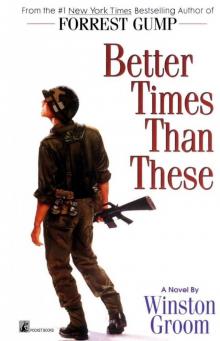 Better Times Than These
Better Times Than These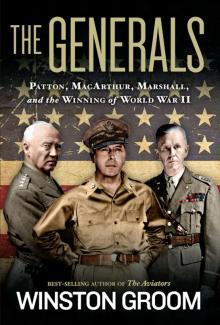 The Generals
The Generals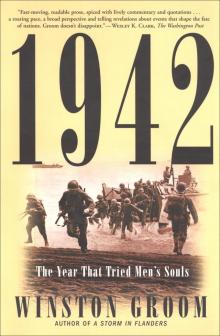 1942: The Year That Tried Men's Souls
1942: The Year That Tried Men's Souls Forrest Gump
Forrest Gump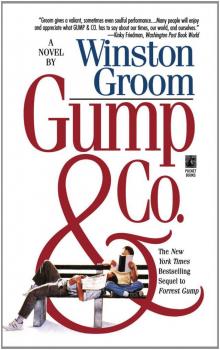 Gump and Co.
Gump and Co.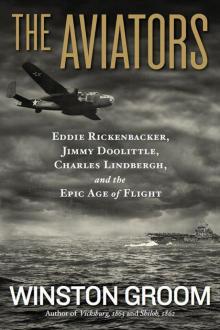 The Aviators
The Aviators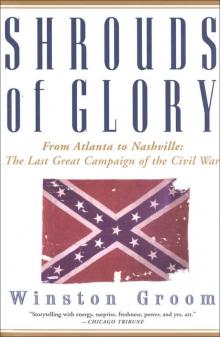 Shrouds of Glory
Shrouds of Glory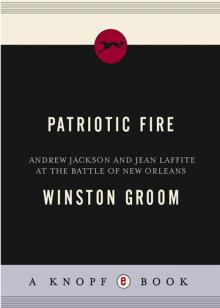 Patriotic Fire
Patriotic Fire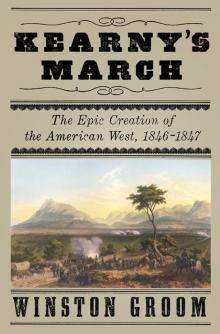 Kearny's March
Kearny's March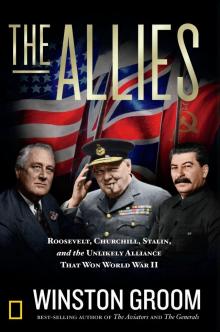 The Allies
The Allies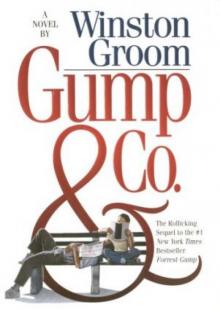 Gump & Company fg-2
Gump & Company fg-2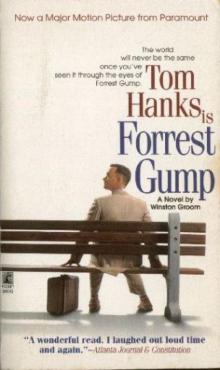 Forrest Gump fg-1
Forrest Gump fg-1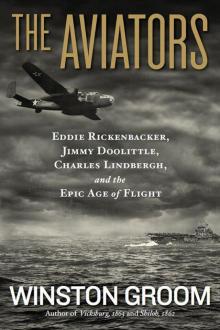 The Aviators: Eddie Rickenbacker, Jimmy Doolittle, Charles Lindbergh, and the Epic Age of Flight
The Aviators: Eddie Rickenbacker, Jimmy Doolittle, Charles Lindbergh, and the Epic Age of Flight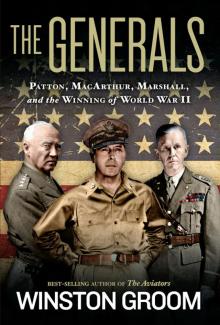 The Generals: Patton, MacArthur, Marshall, and the Winning of World War II
The Generals: Patton, MacArthur, Marshall, and the Winning of World War II